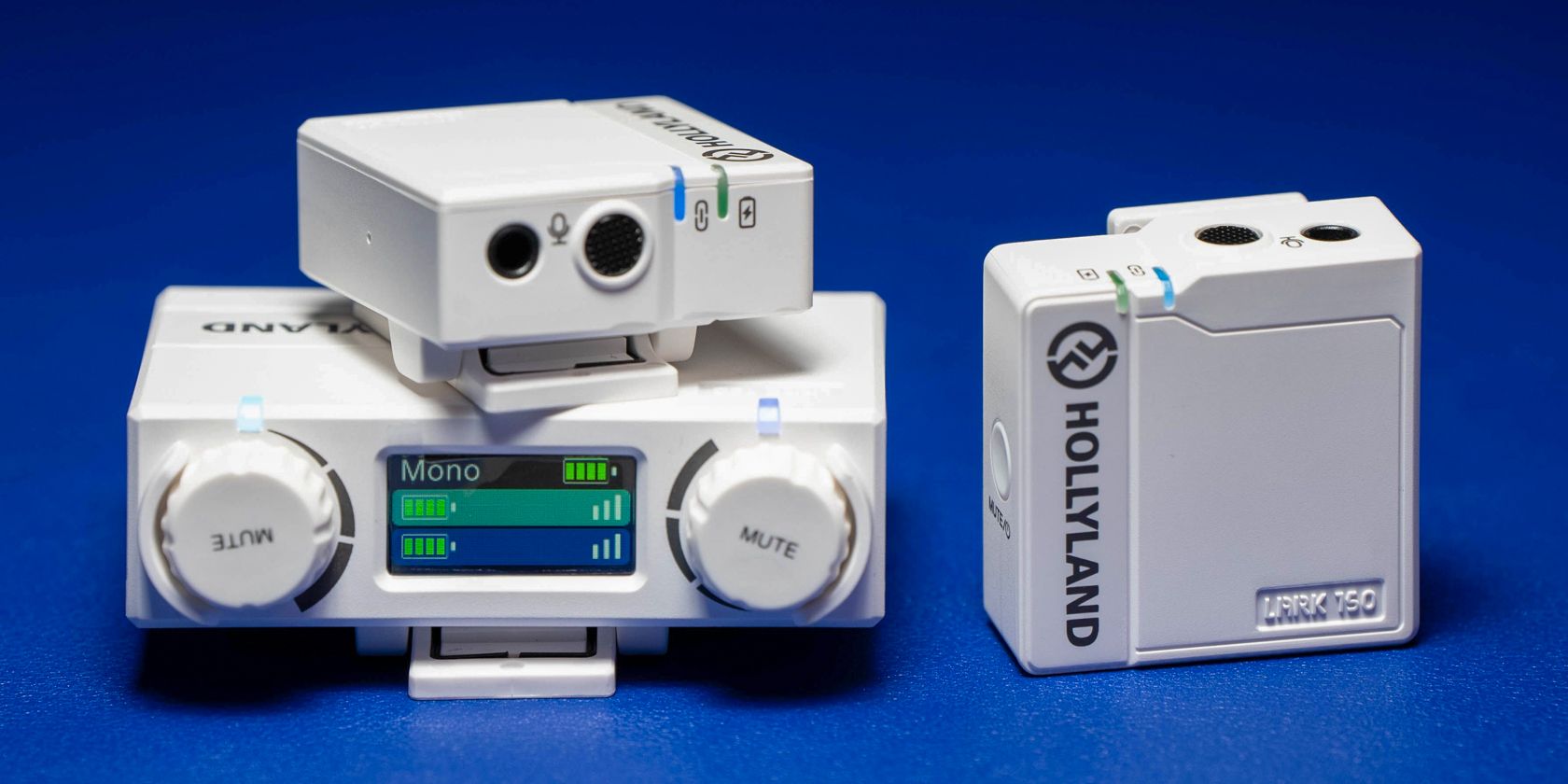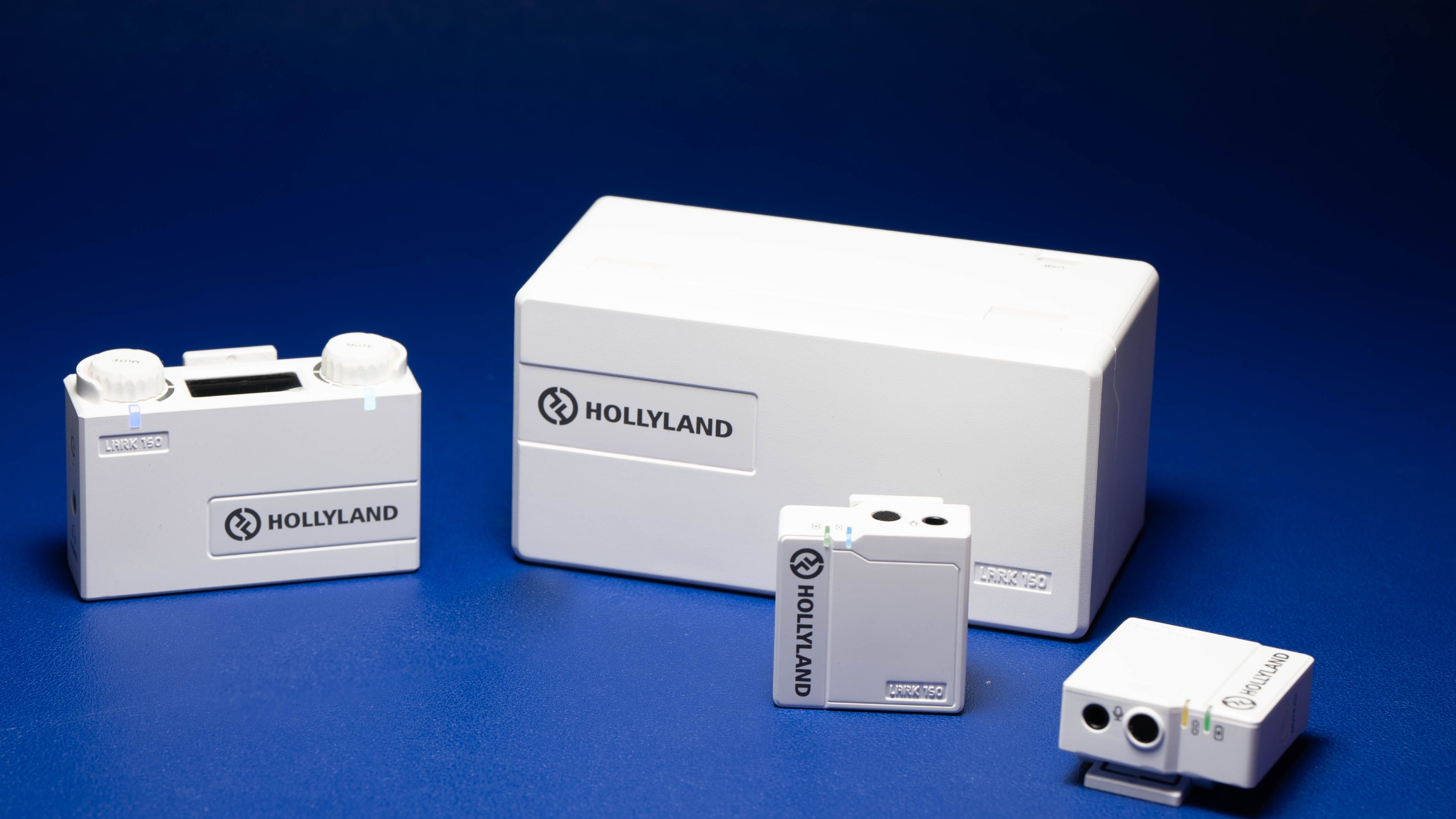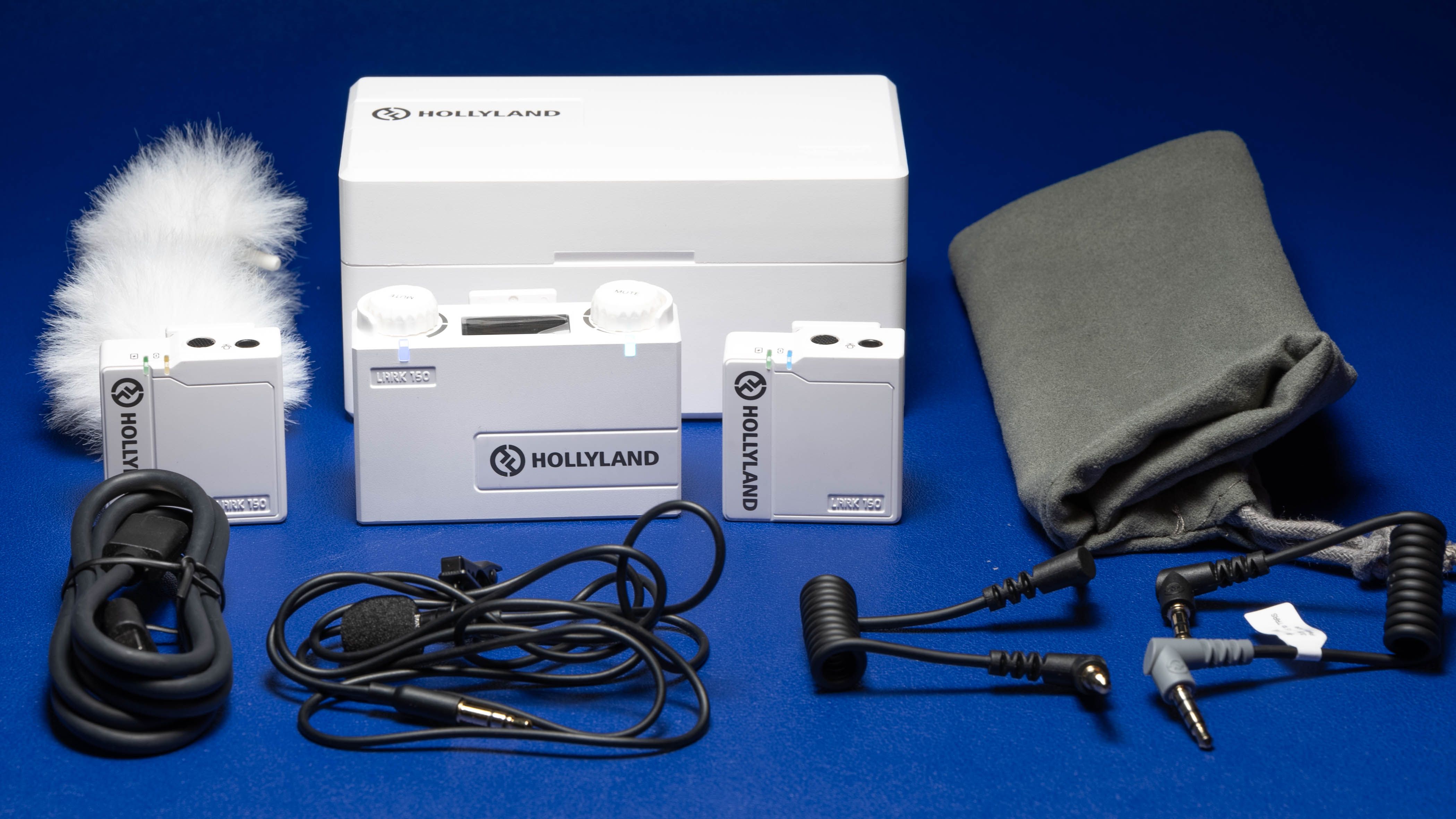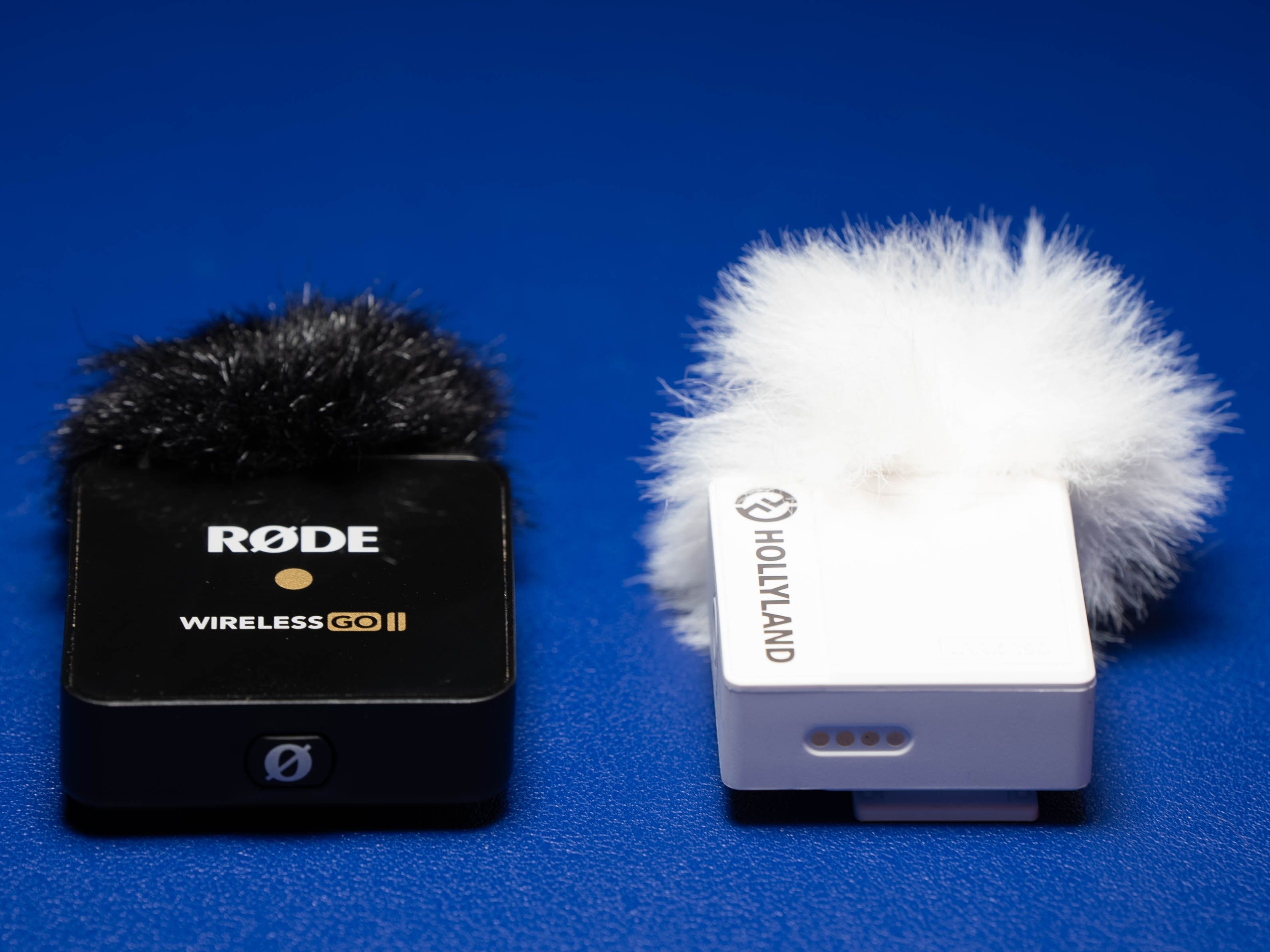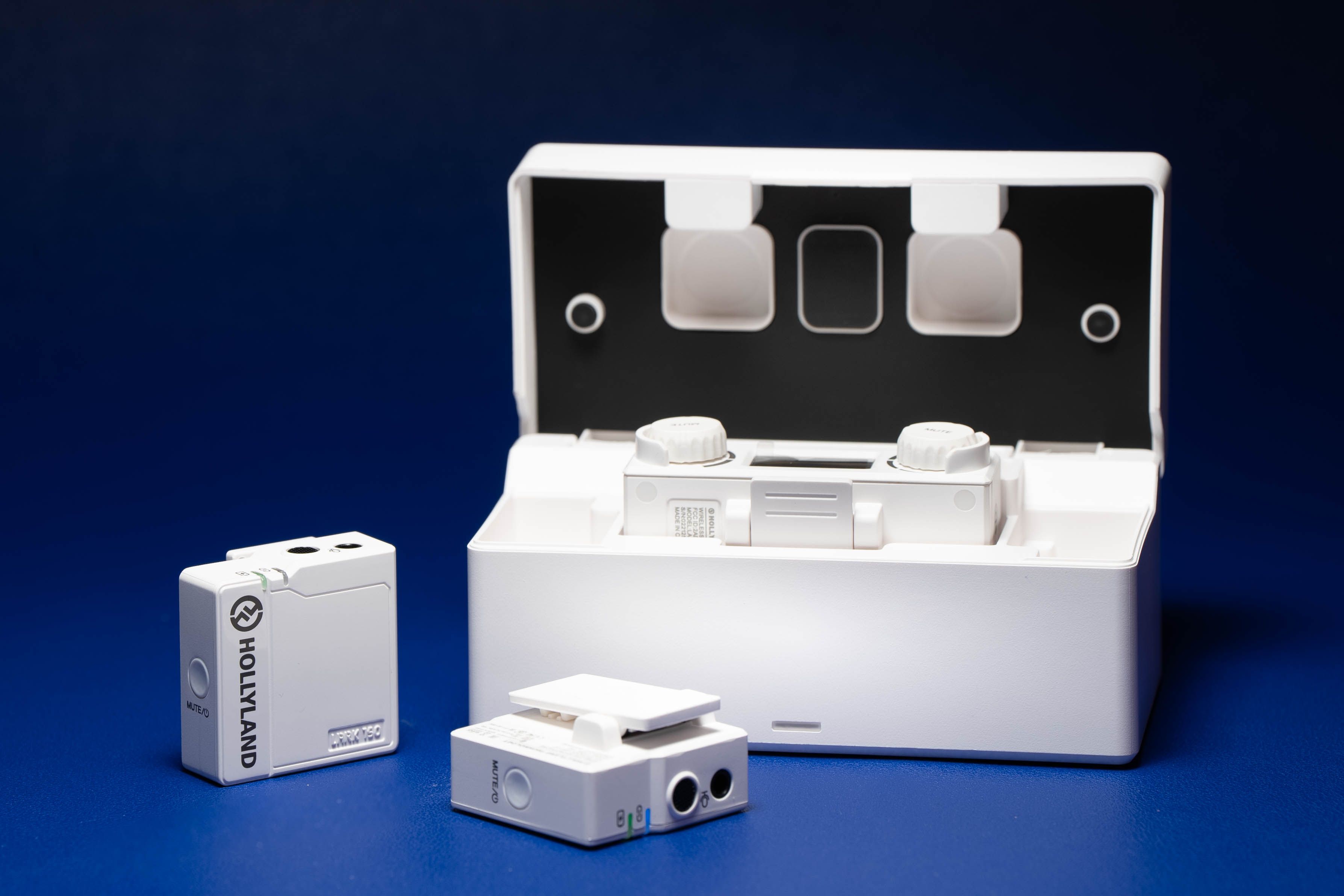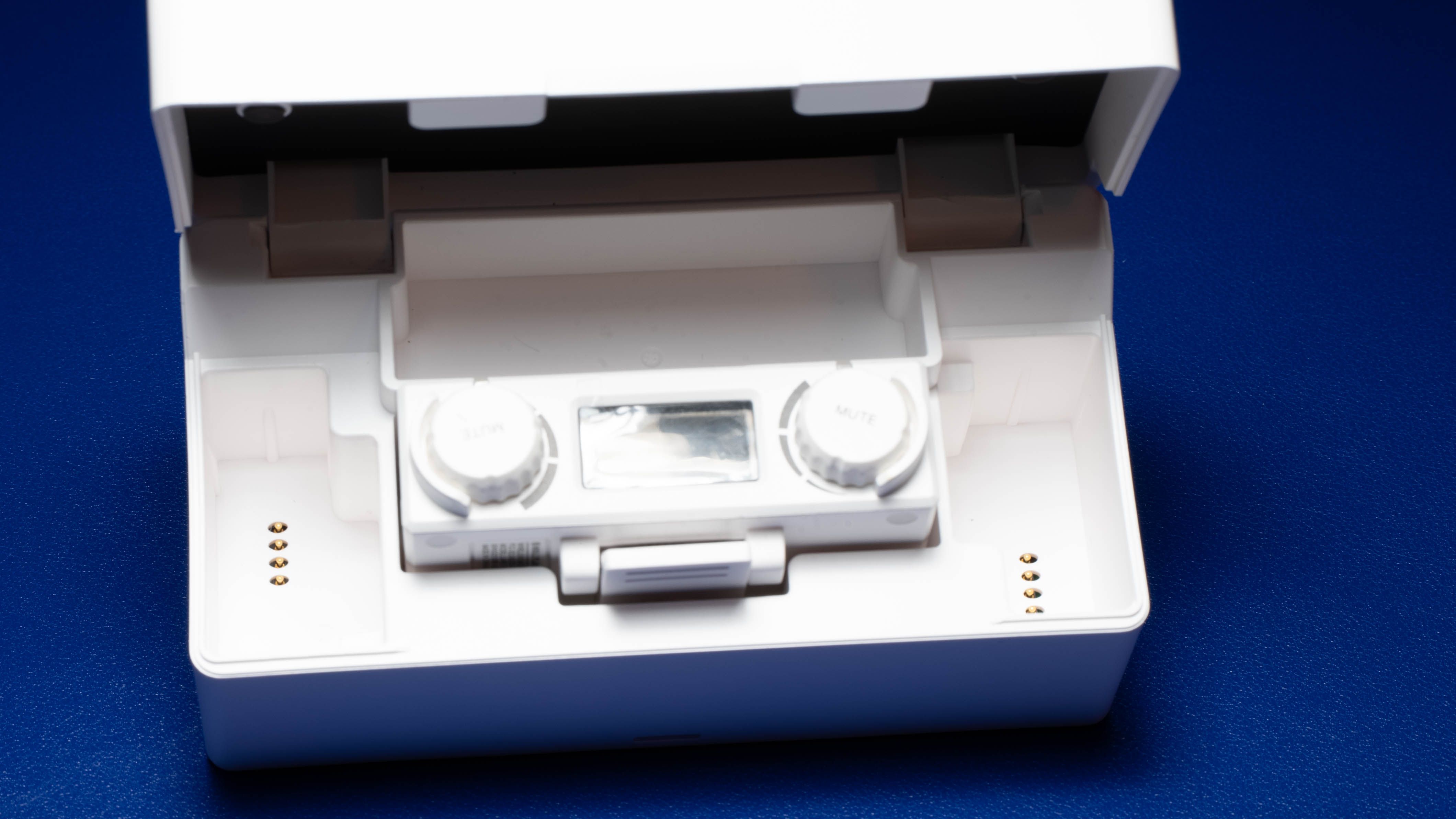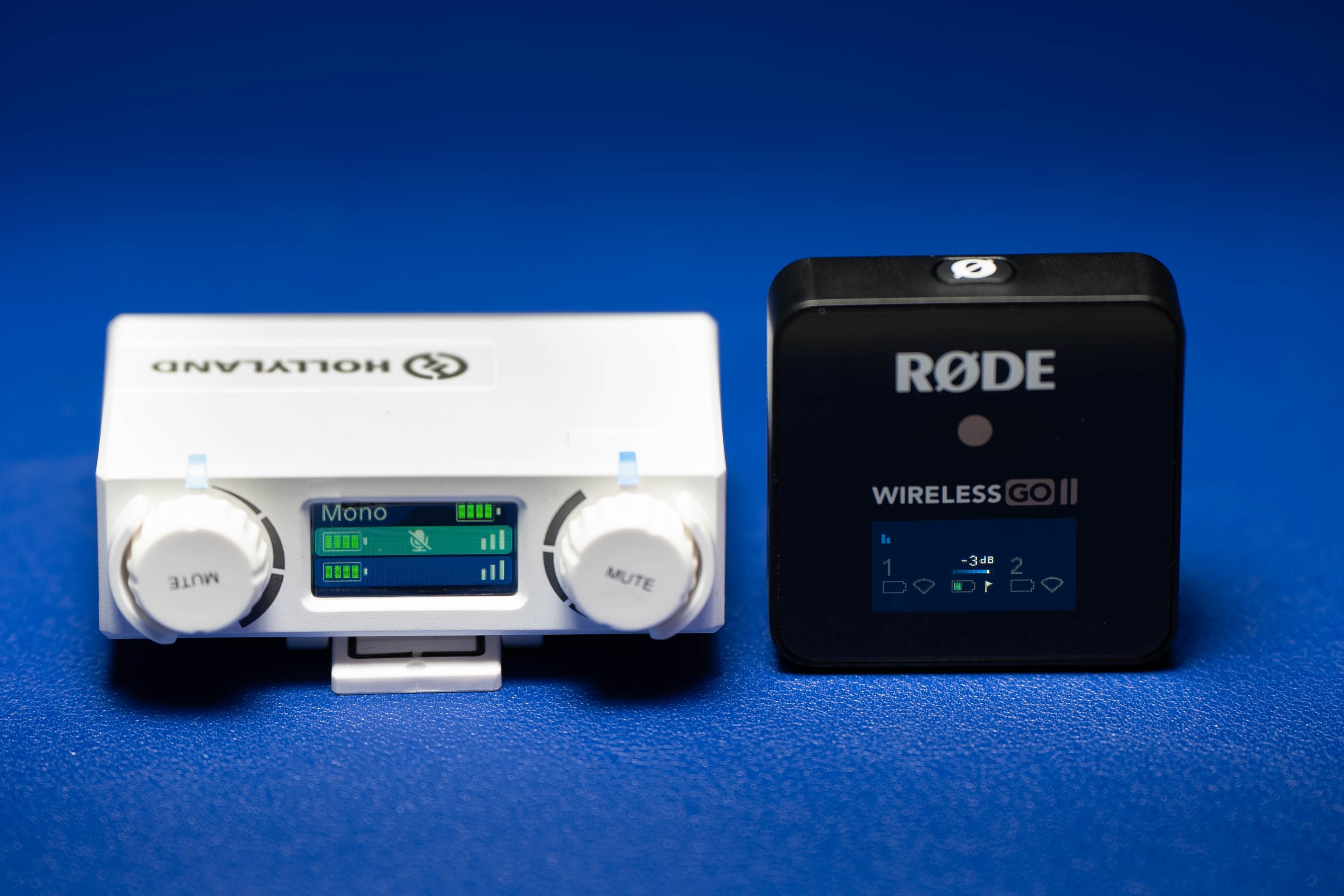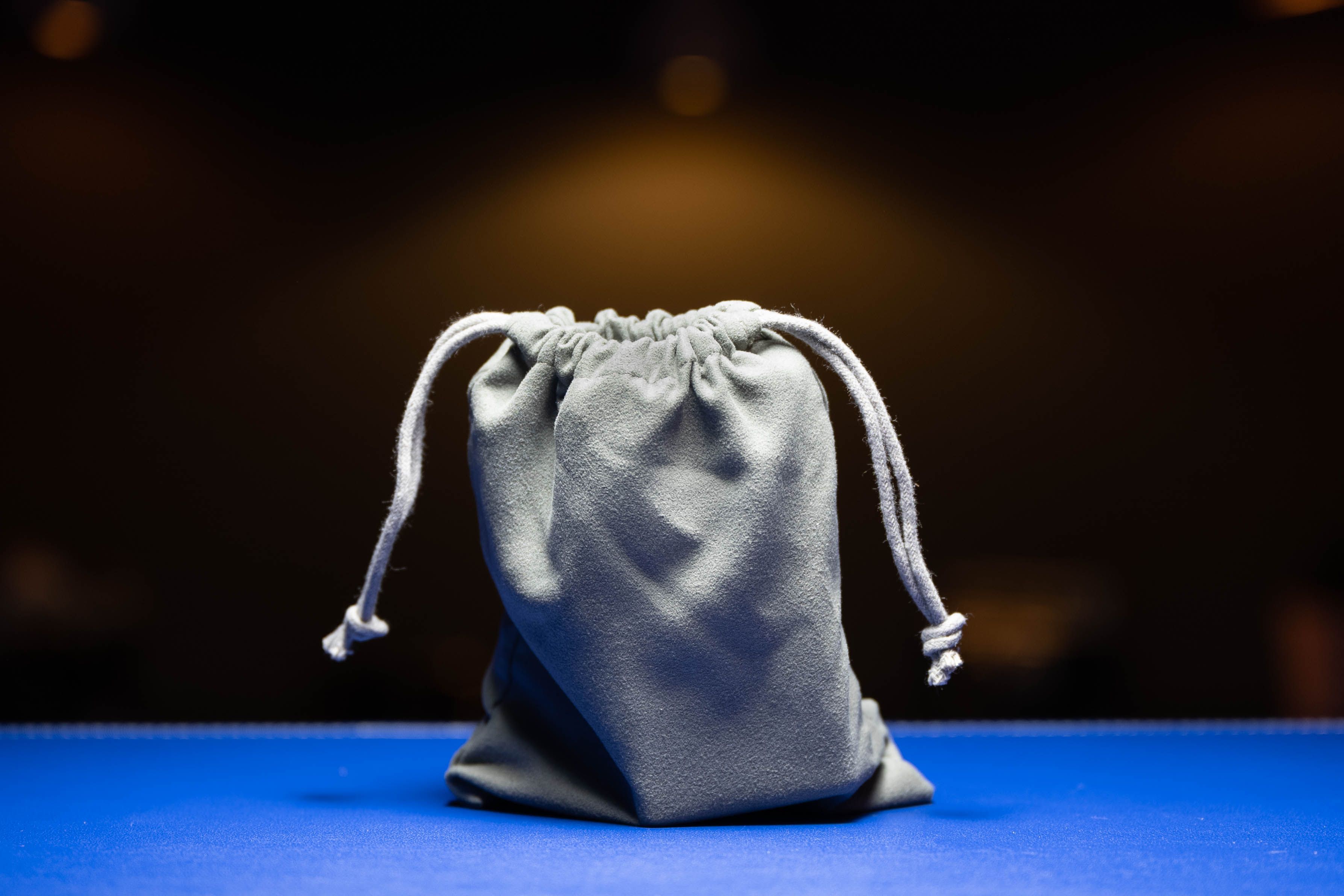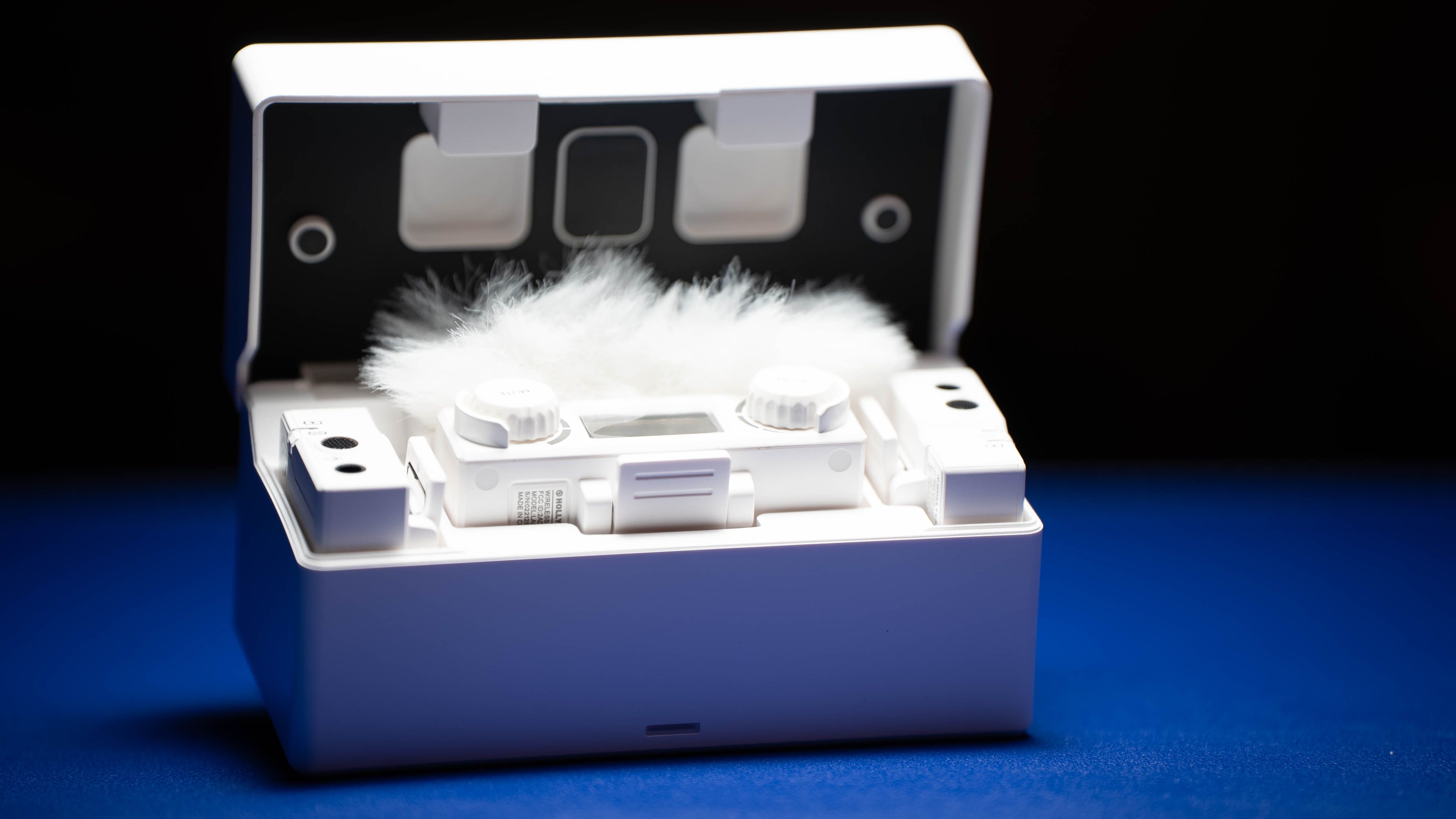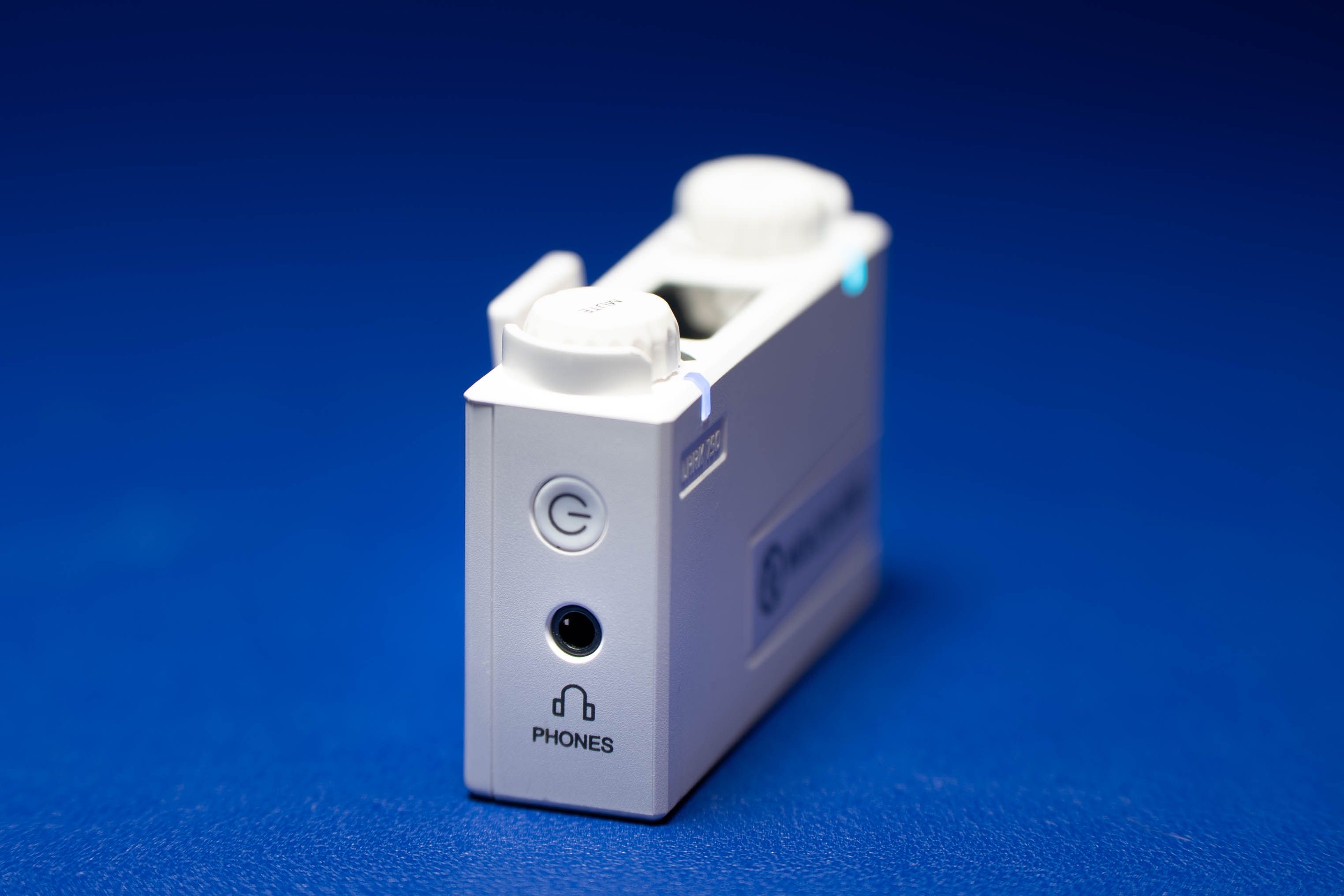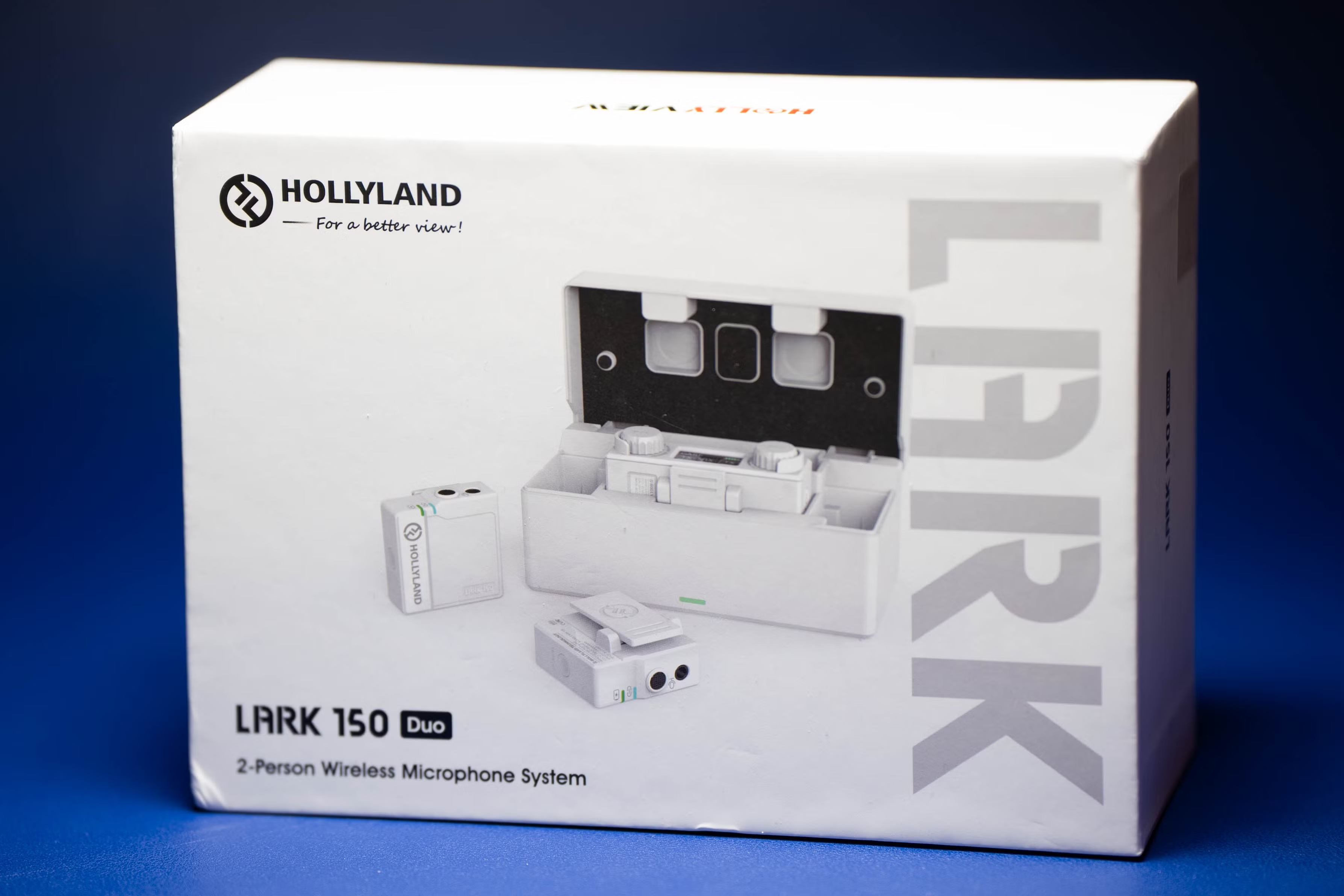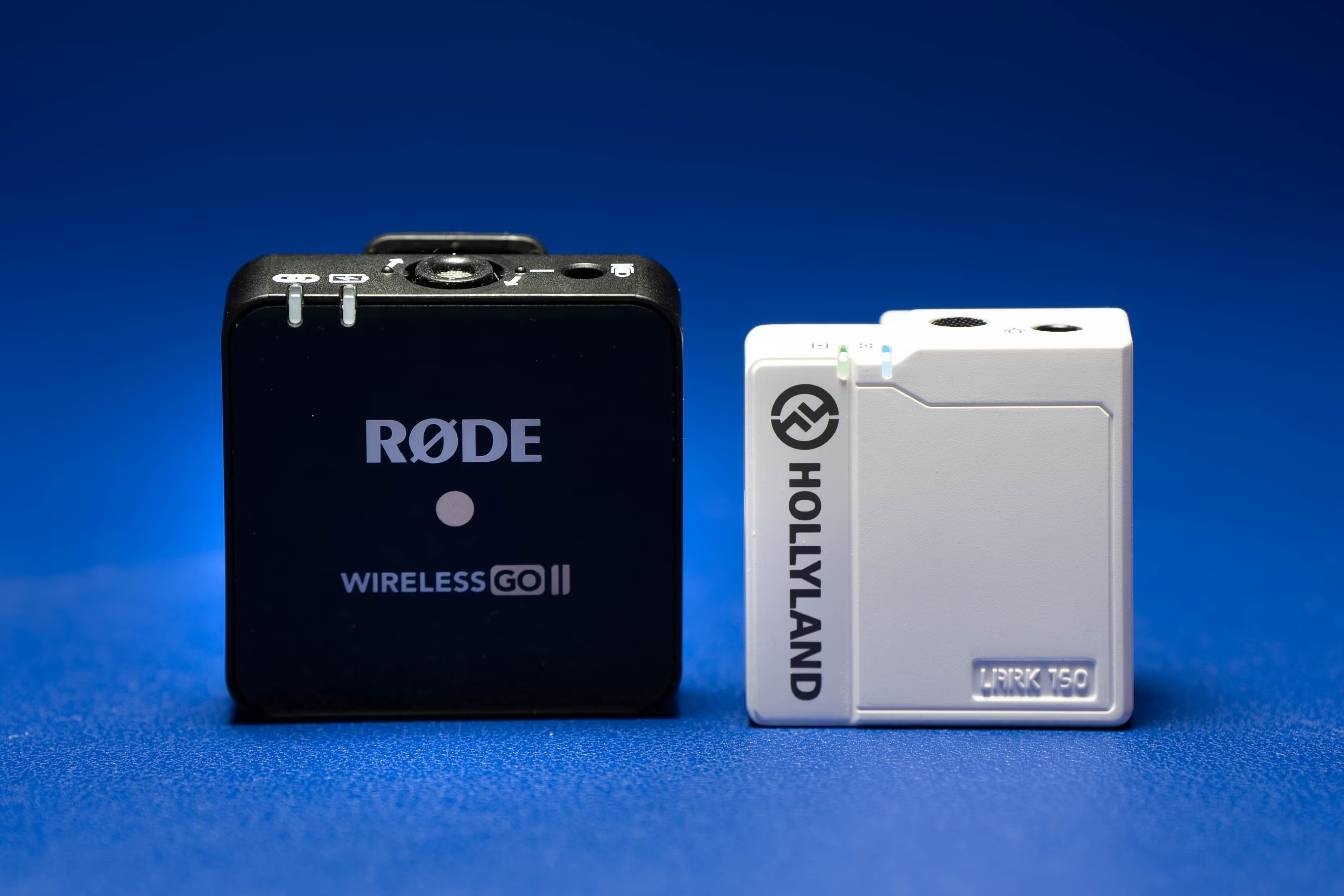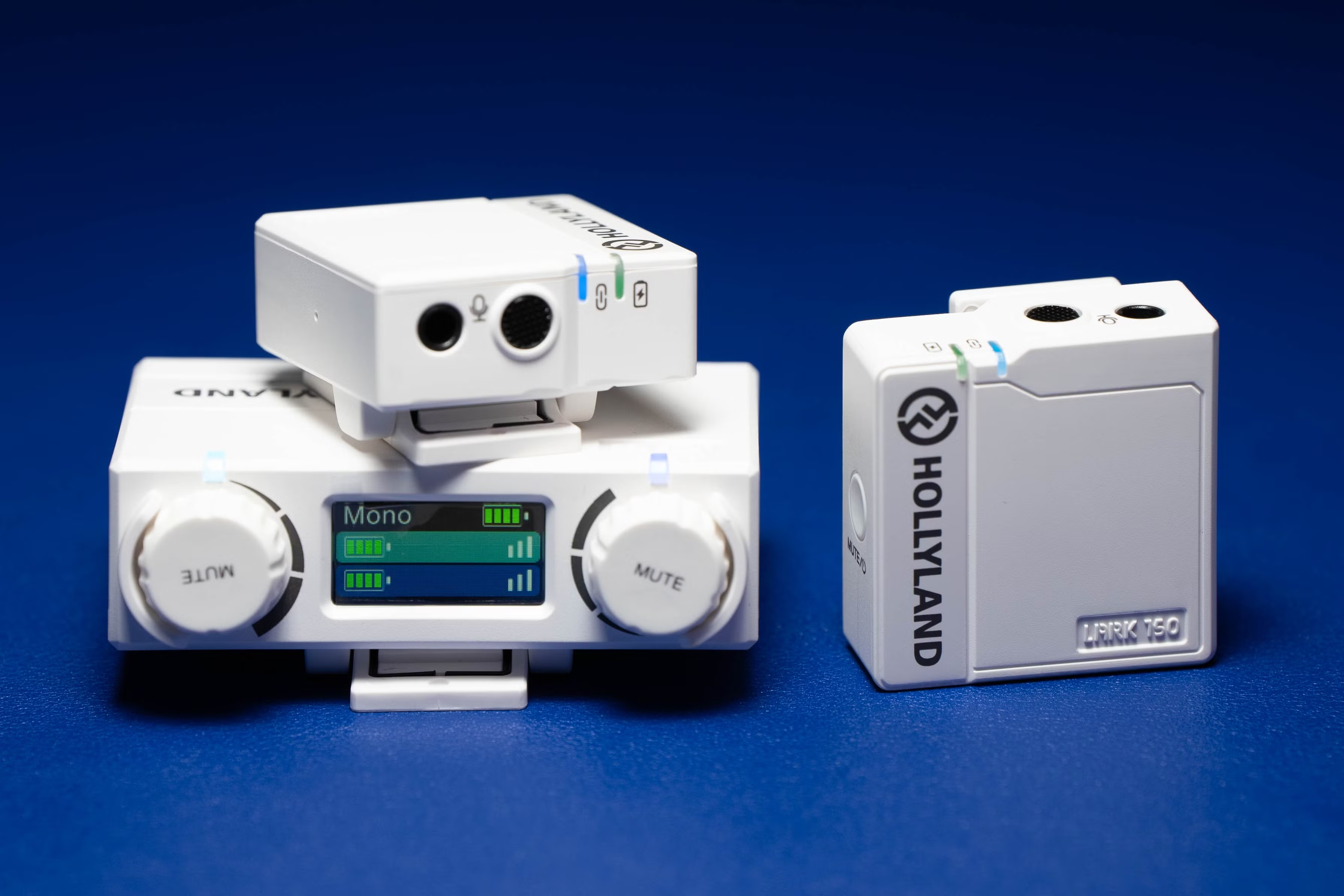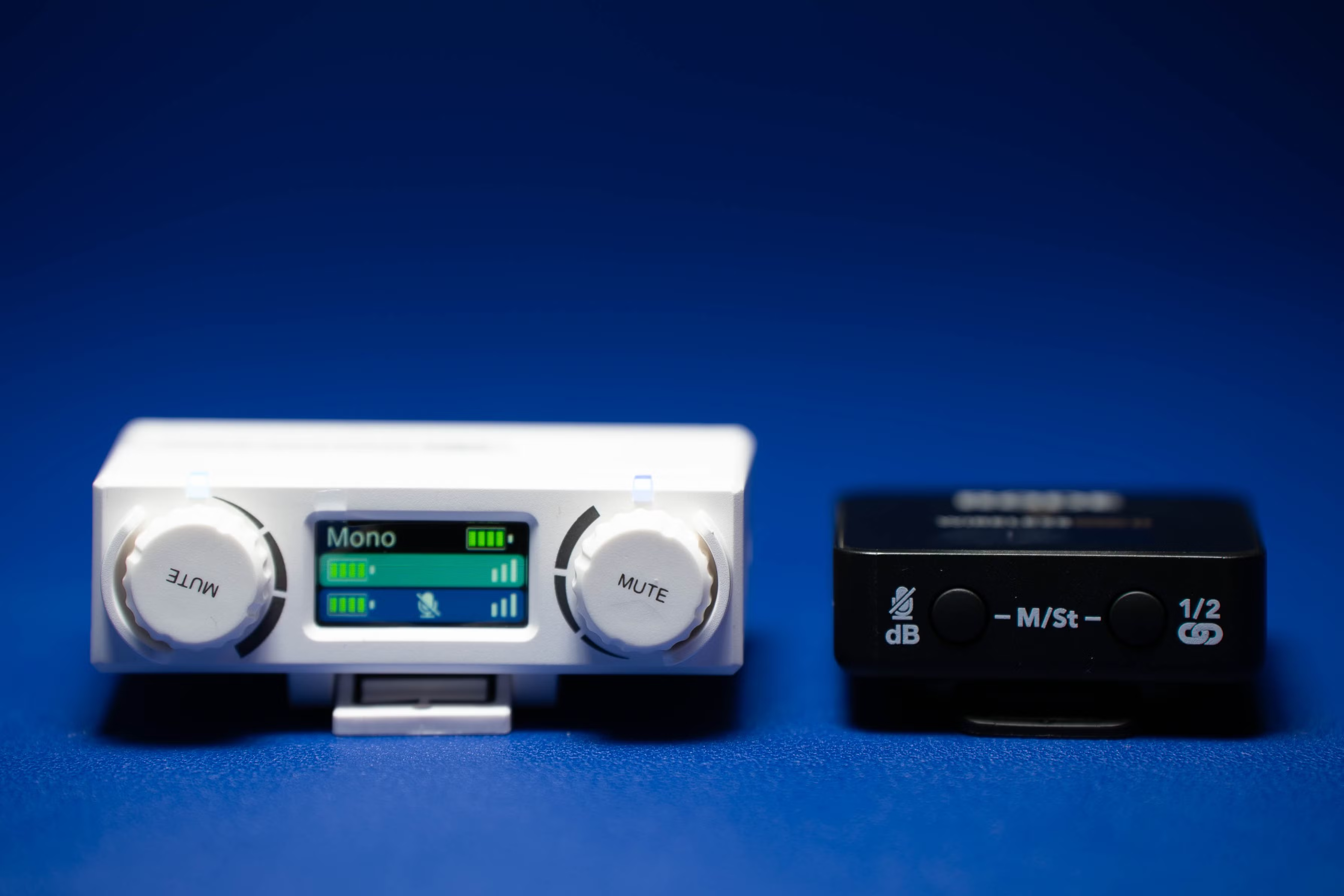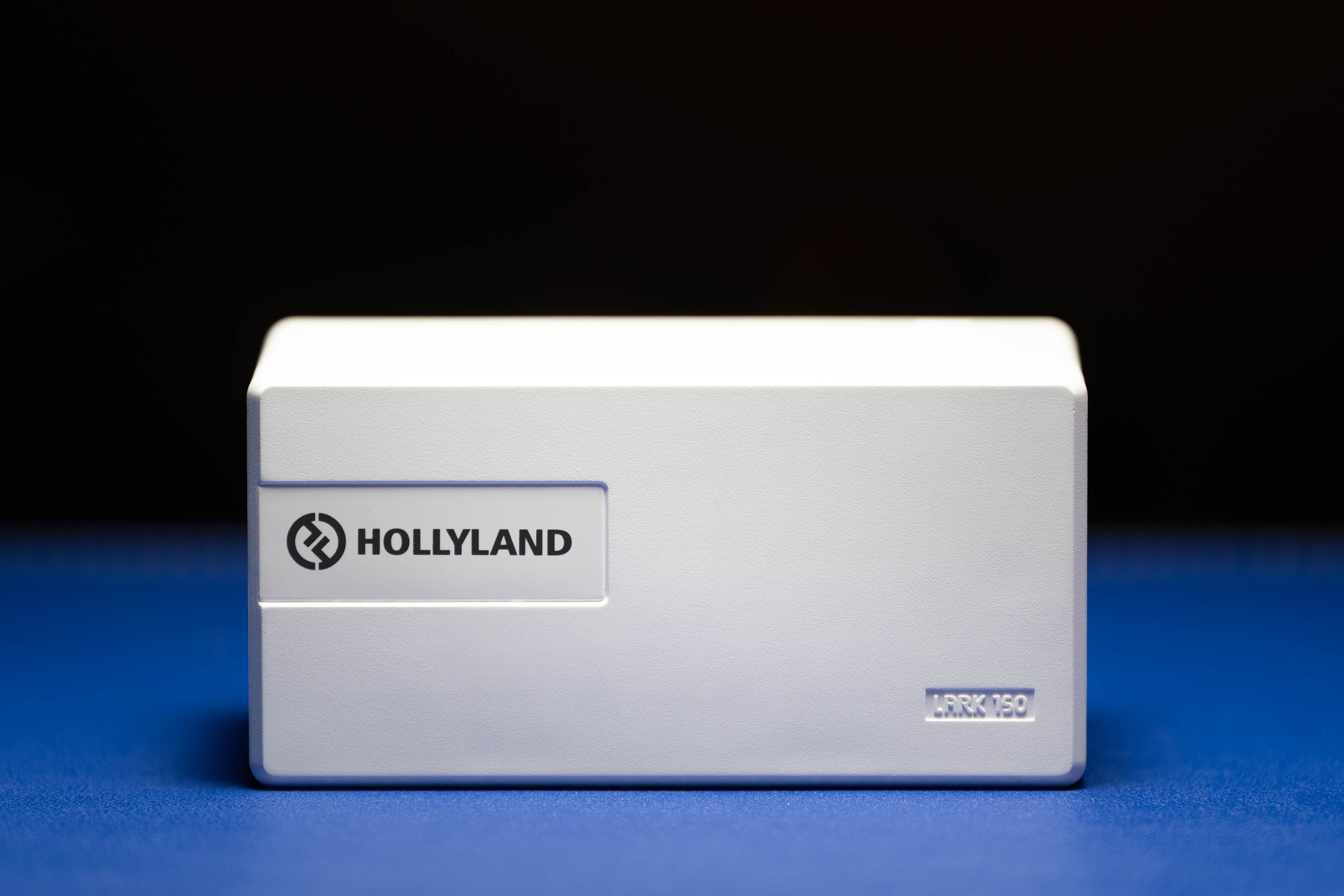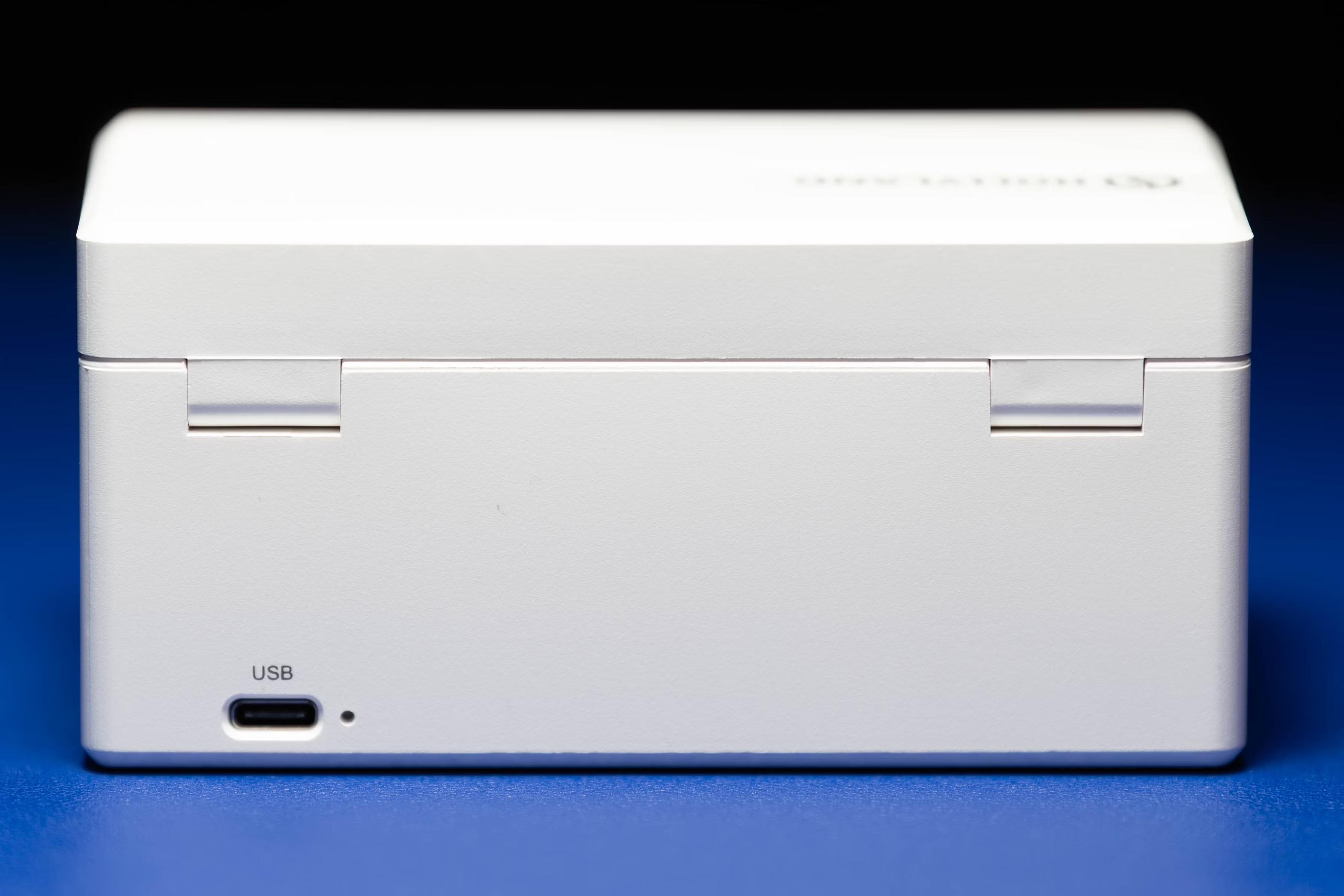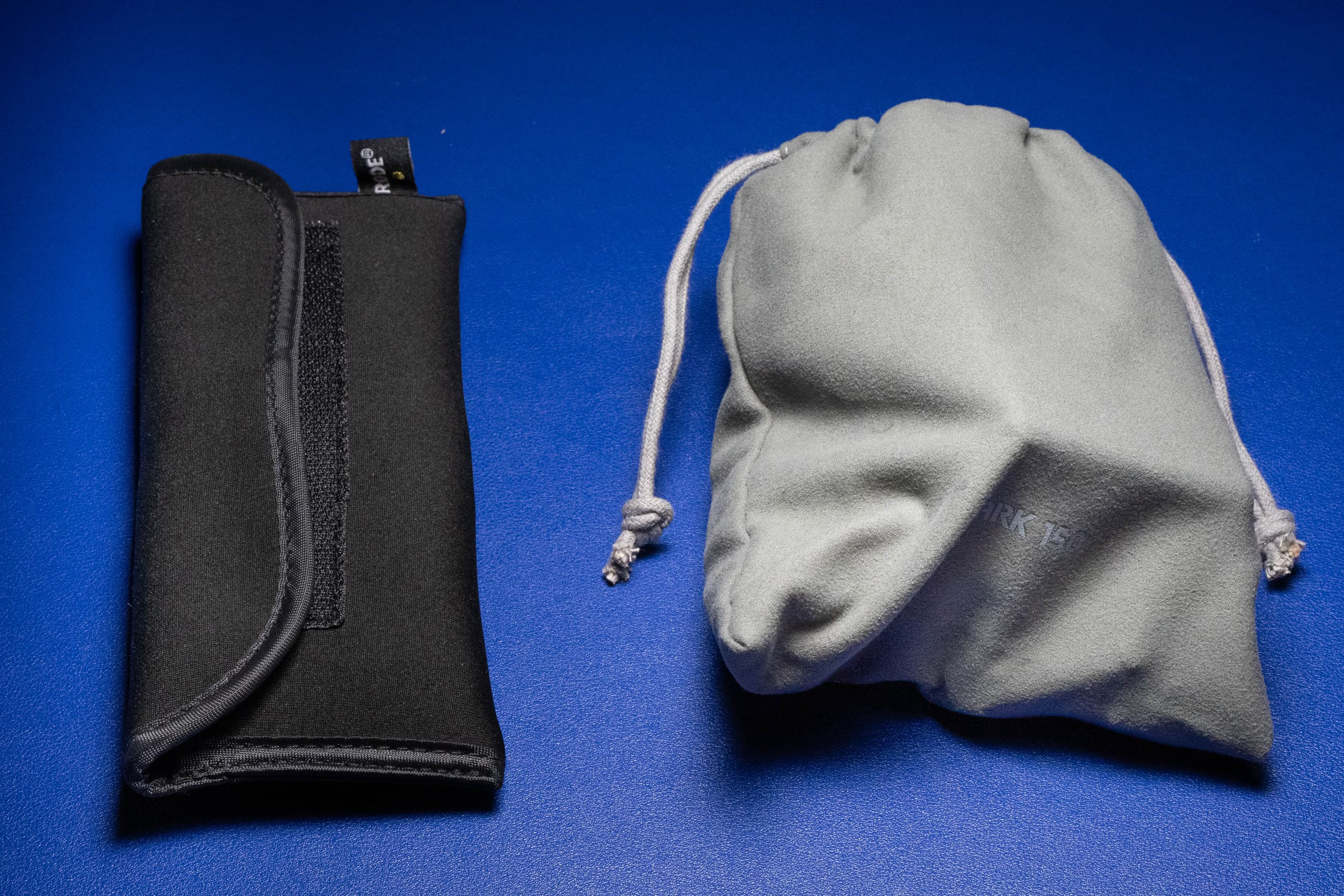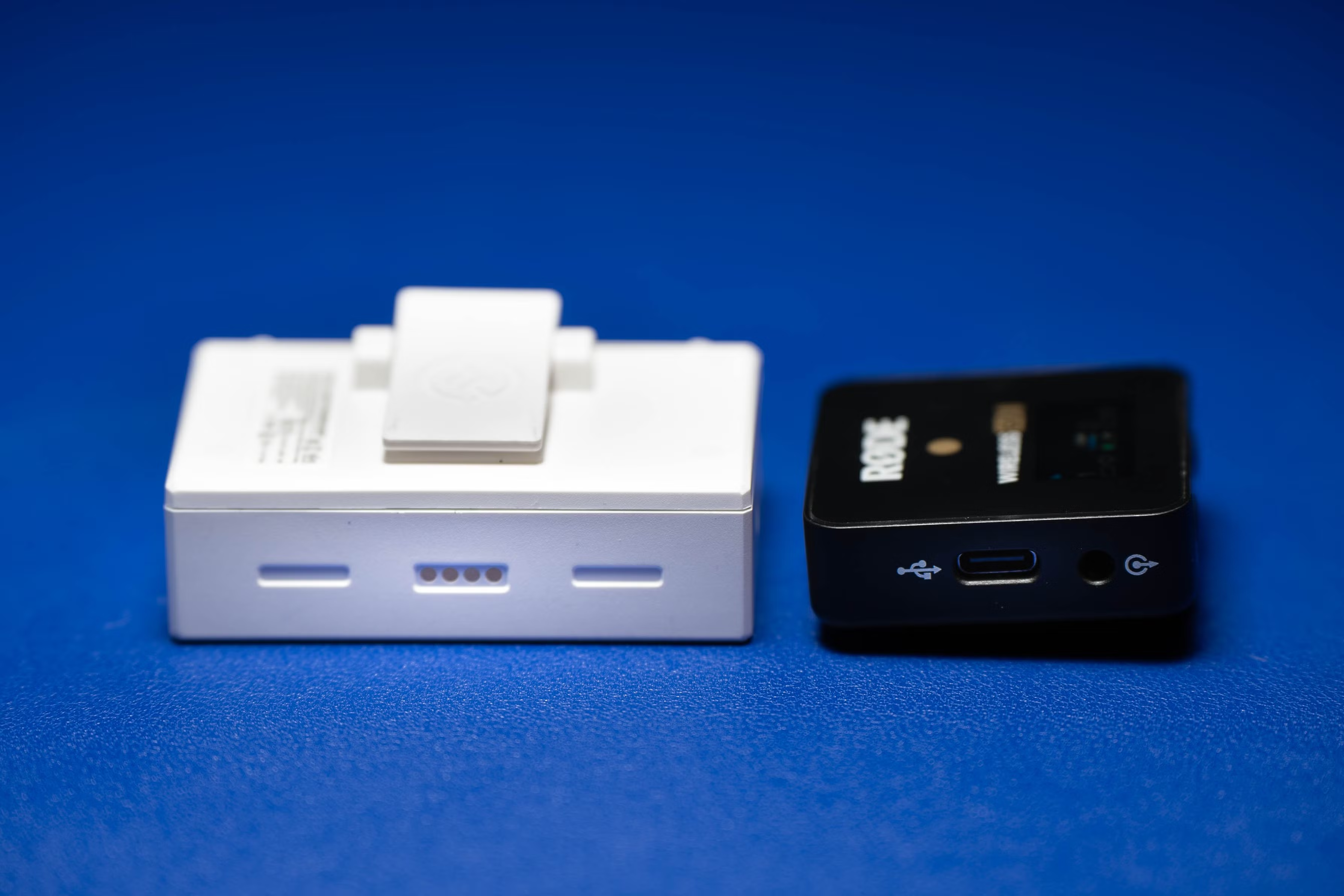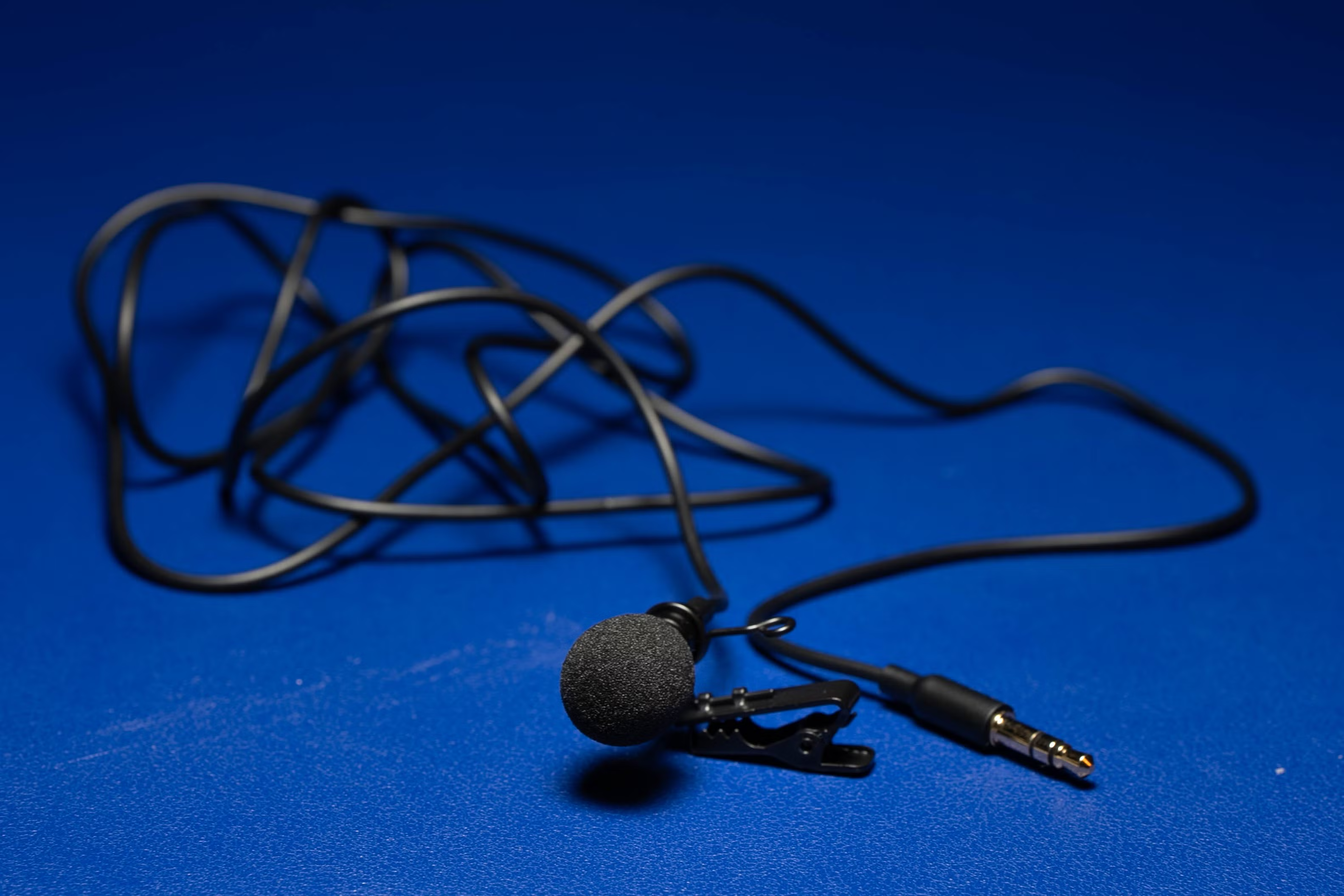Hollyland Lark 150 Duo
The Hollyland Lark 150 DUO brings some unique features and conveniences to the evergrowing wireless clip-on microphone system, but does it offer enough to stand out from the strong competition?
- Transmitters & Receiver auto power on and pair when removed from case
- Two-way mute & real-time audio monitoring
- Optional -6db safety track
- Contact charging
- Smallest and lightest transmitter
- 100m wireless audio transmission (with line of sight)
- 20m wireless audio transmission (back turned)
- Charging case gives about two and a half full charges to transmitters and receiver
- Brand: Hollyland
- Battery: TX: 4hr, RX: 7.5hr, Charging Case: About 2.5 full charges
- Latency: <5ms
- Interfaces: TX: 3.5mm Audio Input, RX: 3.5mm TRS Output + 3.5mm Headset, Charging Case: Magnetic charging contacts + USB Type-C
- Weight: TX: 20.5g, RX: 51g, Case: 227.5g
- Frequency Bandwidth: 2.4GHz AFH
- Microphones: Built in + Lavalier
- System auto turns on & pairs when out of case
- Excellent & easy to use controls on receiver
- Case doubles as central and backup charging solution
- Great sound quality indoors & outdoors
- No noticeable audio interference even at further distances
- Case is bulky & not compact
- Accessories do not fit in case; instead needs to be carried loosely in pouch
- No individual charging for transmitters or receiver without case
The Hollyland Lark 150 is targetted at content creators who want to reliably record and transmit audio wirelessly using a relatively compact and easy to use system. Audio is captured either through the built-in microphone or using the included lavalier mics (or any other 3.5mm TRS compatible audio source).
The Lark 150 comes in either black or white and can be purchased in its Duo kit which includes two Transmitters (TX) and one receiver (RX), the Solo which includes one TX and RX, and lastly the Single TX which is available to upgrade the Solo kit into a Duo at a later time.
I have been using the white Duo kit for the past few weeks on a variety of video productions. Be sure to watch our full video review so that you can hear the various indoor and outdoor audio tests I perform including range and line of sight.
Hollyland is well known for their wireless camera monitoring systems, but the Lark 150 is their first audio product. They've not only gotten a lot right with this release, but actually excelled in some categories with its unique features and design.
Fierce Road Ahead
I'll share my experience using the Lark 150 from the perpective of a content creator, videographer and tech reviewer. I've used several similar wireless audio mic transmitter systems, many of which at similar price points.
Right now, the Lark 150's biggest competition is going to be from the RØDE Wireless GO II, which offers several unique advantages over other systems. While this review will not be a direct comparison between these two systems, I will frequently be sharing several of the key ways the Lark 150 stacks up to the heavy hitter.
As a refresher, the RØDE Wireless GO II is also a two person compact 2.4ghz wireless microphone system with similar functionality but with the key advantage of being able to record audio internally via the transmitters, even if the receiver is powered off or disconnected completely.
This is especially great for solo creators or just giving you extra confidence in knowing you'll always have audio recorded. On the other hand, it does have some limitations with its controls and level adjustments that might make it a difficult choice for some users.
As will be the theme of this review, depending on the type of creator or producer you are, and how you prefer to record or adjust your audio, the Lark 150 has some unique features and value of its own that can make it a more reliable, easier to use and affordable choice.
While there is no "perfect" system, I will provide as many examples to help you decide if the Lark 150 is the right system for you.
Setup and Functions
Connectivity & Range
Of of the advantages with the Lark 150 is how quickly it is to setup. Once you remove the transmitters and receiver from the case, they automatically turn on and pair. You just need to mic up your subject, plug in the receiver and you're good to record.
The Lark 150 uses FHSS technology (Frequency Hopping Spread Spectrum) which allows the system to automatically pick the best 2.4ghz frequency to use. Hollyland claims less than 5ms of latency and a range of up to 100 meters (328 feet) from the receiver. A lot of factors come into play here, including other sources of radio interferance as well as your environment, so your results will vary.
Realistically, I think anything over 50 meters with line of sight is more than enough for most practical uses. What's more important, though, is the transmitter's range with your back turned. In my tests these wireless systems tend to have a dramatically shorter range when there is an obstruction or if you turn away from them. I think Hollyland is one of the only brands that I've found to actually advertise their effective range when your back is turned. In my outdoor tests I found their 20 meter claim to be fairly close to what I got.
Controls and Monitoring
One of the other big advantages to the Lark 150 are with its controls. Because of the receiver's larger size it allows it have big physical adjustment buttons which allow users to make changes quickly and intuitively.
I personally found the Wireless Go II's receiver to be lacking here as it required additional steps to select the transmitter I wanted and then to mute or unmute them. With the Lark 150, you have individual controls for each transmitter on your receiver. Additionally, you can also mute each transmitter using the small mute button that has on their side.
The output level adjustment has 21 steps and covers 45db. On the screen of the receiver you can also clearly see the levels, if the channel is muted and which recording mode you're in. Matching up with the LED lights on the transmitters, the transmitter's LCD screen displays channel one's battery life and signal level bar in turquoise and channel 2's in blue.
Another area the receiver excells in is having a dedicated headphone output. Perhaps due to the RØDE Wireless GO II's smaller size, its receiver lacks this and in turn requires you to use 3.5mm splitter if you want to monitor audio directly from the receiver. Even though the headphone output level on the Lark 150 can't be controlled individually, it is still nice to have. With all these advantages and conveniences specifically with the receiver, I think this system is better designed for those operating behind the camera.
Modes
By holding down either of the mute buttons, you can switch the recording mode from Stereo, Mono, or Stereo with a Safety track. The safety track is especially useful if you have unpredictable or difficult audio sources that have large fluctuations in audio levels. This helps prevent your audio from clipping as much by recording the right channel at -6db. The limitation, though, is you will not be able to adjust the levels of each receiver
Included Value
One of the advatages with the Lark 150 Duo kit is that you receive everything you need to record up to two subjects or sources simultaniously without the need to purchase any additional accessories.
Charging Case & Carrying Bag
One of the biggest things going for the Lark 150, is actually its rather large and bulky case which holds the two transmitters and one receiver. The top of the case has a soft material that keeps everything snug and in place.
With its built in 3500mAh battery that charges to full in about 2.5 hours, the case doubles as central charger for the three devices. The magnetic ends of the transmitters and receiver securely connect them to the case so they don't fall out and are also what keep them charged.
The case has one USB C input on the back for charging it up as well as updating its firmware.
While this case has the advantage of being able to charge everything up using just one cable and even on the go with its internally battery, I found it to be a bit too bulky and heavy when I wanted to travel light.
Compared to the RØDE Wireless GO II's long and slim plush case, its much more difficult to pack everything up into smaller camera bags and compartments. RØDE's bag may not charge its devices like the Lark's case, but it is significantly easier to carry around and actually holds all your accessories too. I personally prioritize packing lighter, but users who want to ensure their devices can be more conveniently charged while like this solution.
Although the case has another small compartment inside, I found that I could only realistically fit its two included windmuffs. I'm not sure what else this spot was intended to hold, if anything, but it does have me wishing it and was larger so I could actually fit more of the accessories inside.
Hollyland does include a separate bag, which yes, does hold the case as well all the other accessories, but I hardly consider this to be an ideal solution. First off, its just asking for all your wires to get jumbled together, especially if you're like me and you just throw everything back into the bag after your shoot. Second, it just adds to the bulk of the case and further makes this a very awkward shape that you need to pack.
Battery Life
The transmitters have a 200mAh battery which lasts about 4 hours and charges to full in about 45 minutes, while the receiver being about twice their size, has a 530mAh battery that lasts about 7.5 hours and charges in about 65 minutes. Similar to your range, battery life performance is going be dependant on how much interference is in the environment.
These battery life estimates are decent considering their size, however, if you plan on doing a longer, continuous recording session, it could be limiting. Unlike other systems like the RØDE, you can't charge the system while its in use. Although the RØDE doesn't have a charging case, I can continuously power each of the transmitters and receiver using a small power bank if needed.
2x 3.5mm TRS Lavalier Microphones
Unlike some other similar systems at this price point, two lavalier microphones are included. While there's somewhat of a stigma surrounding included lapels, these sound decent enough for either indoor or outdoor use.
Compared to the internal mics, which also sound good and on-par with the RØDE Wireless GO II, the lavs help focus in and isolate your audio source. It's important to note that this is probably at least $40-50 of added value compared to systems that do not include lavs. While some users, especially those who already have a prefered external microphone might not mind, those looking to buy a complete system with everything they need included, will really appreciate this.
The lavs have the usual alligator shirt clips and removeable windpuffs. The 3.5mm ends do not, however, have any clip/latch of their own to lock themselves to the transmitters. Other systems like the Comica Boom XD have this which helps prevent the cables from being unplugged.
I am somewhat concerend about the durability of these cables, too. In addition to being somewhat thin, each end also seems to be less protected than I would like. I could see a strong pull or pinch causing the mic to break. Going back to how the charging case does not fit your other additional accessories, putting these lavs loosely in the carrying pouch with everything else isn't doing any favors.
2x Windmuffs
The windmuffs have a long plastic end that is inserted into the 3.5mm inputs of the transmitters when they're attached. They have a rectangular groove on their underside which helps keep them in place and prevents them from twisting. This solution is quick and hassle free, but unlike the RØDE's windmuffs which actually have to twist onto a screw like design, the Lark's can still be pulled off or experience more wiggle.
USB C to Type A, TRS & TRRS Cable
The USB C cable is used to charge the case or connect to your computer to update the firmware. Included as well are a TRS to TRS cable which you'll use to connect to most cameras and recorders, and a TRS to TRRS cable if you're connecting to smart devices like phones and tablets.
Conclusions
You get lots of added value with this Duo kit that many similar systems do not offer. Hollyland has done a good job with their first wireless audio system.
While the system may not be the most compact, have the best range or battery life, for many users the new features, ease of setup and controls that it offers can make it a better system for users who operate behind the camera, rather than film themselves as much.

